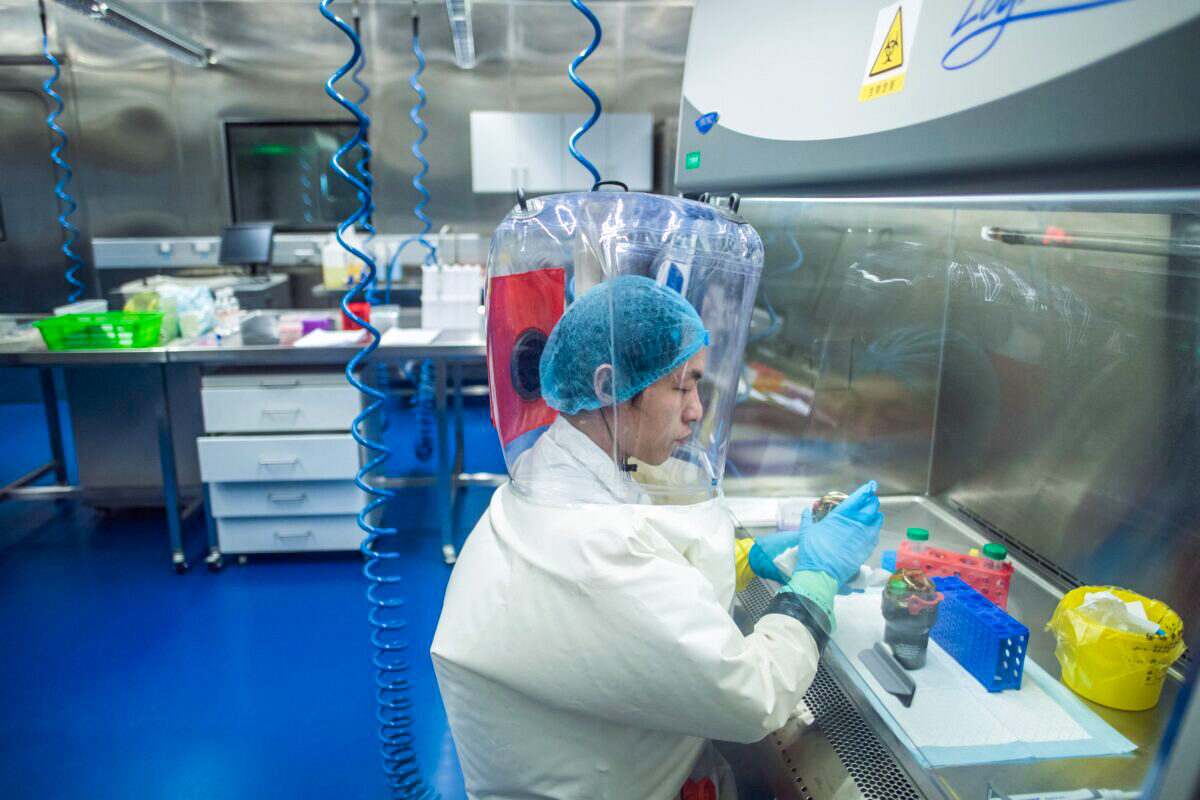
New documents have been published detailing U.S.-funded research on various types of coronavirus at the Wuhan Institute of Virology in China, where the first outbreak of the PCC (Chinese Communist Party) virus occurred.
The Intercept obtained more than 900 pages of material in connection with a lawsuit for freedom of information through publication against the National Institutes of Health (NIH).
The documents detail the work of the EcoHealth Alliance, a U.S.-based healthcare organization that used federal money to fund research on bat coronaviruses in the Chinese lab.
They include two unpublished grant proposals funded by the National Institute of Allergy and Infectious Diseases, as well as project updates related to EcoHealth Alliance research.
One of the grants awarded by the NIH to the EcoHealth Alliance is titled “Understanding the Risk of Bat Coronavirus Outbreak” and amounts to $ 666,422.
It outlines an ambitious plan led by EcoHealth Alliance President Peter Daszak to “investigate the ecology, evolutionary biology and transmission dynamics of bat coronaviruses at the human-wildlife interface.”
“Specifically, we will conduct field studies in China to obtain high-quality bat samples and identify, characterize, and isolate the known and new coronavirus. We will analyze coronavirus transmission patterns between bats and other wild animals and the risk of spillage to humans, “the proposal says. The research also involved the detection of people working with live animals.
The papers also note that key experimental work with humanized mice was conducted in a biosafety level 3 laboratory at the Center for Animal Experimentation of Wuhan University and not at the Wuhan Institute of Virology, as was reported. assume earlier, as reported by The Intercept.

The grant proposal also recognizes the potential dangers of the study, including during fieldwork, and states that “it carries the highest risk of exposure to SARS or other CoV, while working in caves with high bat density and fecal dust inhalation potential “.
“There is also some risk of exposure to pathogens or physical injury while handling bats, civets, rodents or other animals, their blood samples from their excreta,” the document states. “Virus isolation can be a challenge,” the researchers note.
The Bat Coronavirus Grant provided the EcoHealth Alliance with a total of $ 3.1 million, including $ 599,000 that the Wuhan Institute of Virology used in part to identify and alter susceptible bat coronaviruses. infect humans, according to The Intercept.
The grant was initially awarded for a five-year period from 2014 to 2019. Funding was renewed in 2019, but the Trump administration suspended it in April 2020.
The second grant awarded by the NIH to EcoHealth Alliance is titled “Understanding Risk of Zoonotic Virus Emergence in Emerging Infectious Disease Infectious Dispots of Southeast Asia” and was awarded in August 2020 and extends until 2025.
The proposal states that it will “bring together leaders in emerging disease research from the US, Thailand, Singapore and Malaysia’s top three administrative regions to build an early warning system to protect themselves from pandemic disease threats.”
The team “would identify new wildlife viruses in Southeast Asia, characterize their ability to infect and cause disease in people, and use serological tests of samples from people in rural communities with high contact with wildlife to identify the rate of exposure of funds and the risk factors that drive this. “
In-depth monitoring of hospitals serving these communities will be used to examine whether these new agents cause cryptic outbreaks, which researchers hoped would help them develop a rapid response to outbreaks in these regions.

Even before the pandemic, many scientists were concerned about the potential dangers associated with these experiments, and recently published papers will raise more doubts about the theory that the CCP virus pandemic originated from a lab leak in Wuhan.
Following the publication of the papers, Richard Ebright, molecular biologist at Rutgers University wrote on Twitter, “The materials confirm that the grants supported the construction, in Wuhan, of new SARS-related chimeric coronaviruses that combined a spike gene from one coronavirus with genetic information from another coronavirus and confirmed that the resulting viruses could infect human cells.
“The documents make it clear that claims by NIH Director Francis Collins and NIAID Director Anthony Fauci that NIH did not support research on function gain or the potential improvement of the pandemic pathogen in WIV they are false “.
Last month, the World Health Organization (WHO) urged China to share raw data on the first cases of COVID-19, saying it is “vital to know how the COVID-19 pandemic began” and to give a example to establish the origins of all future animal and human overflow events.
A WHO-led team spent four weeks in and around central Wuhan with Chinese researchers in January 2021 to investigate the origins of the pandemic.
In March, the researchers said the virus had probably been transmitted from bats to humans through another animal and that “introduction through a laboratory incident was considered an extremely unlikely route.”
However, the Chinese communist regime has faced fierce criticism from the international community, which has accused them of taking part in a cover-up.
In July, WHO Director-General Tedros Adhanom Ghebreyesus told reporters that investigations into the origins of the COVID-19 pandemic in China were hampered by the lack of raw data from the first days of spread there and urge the regime to be more transparent.
